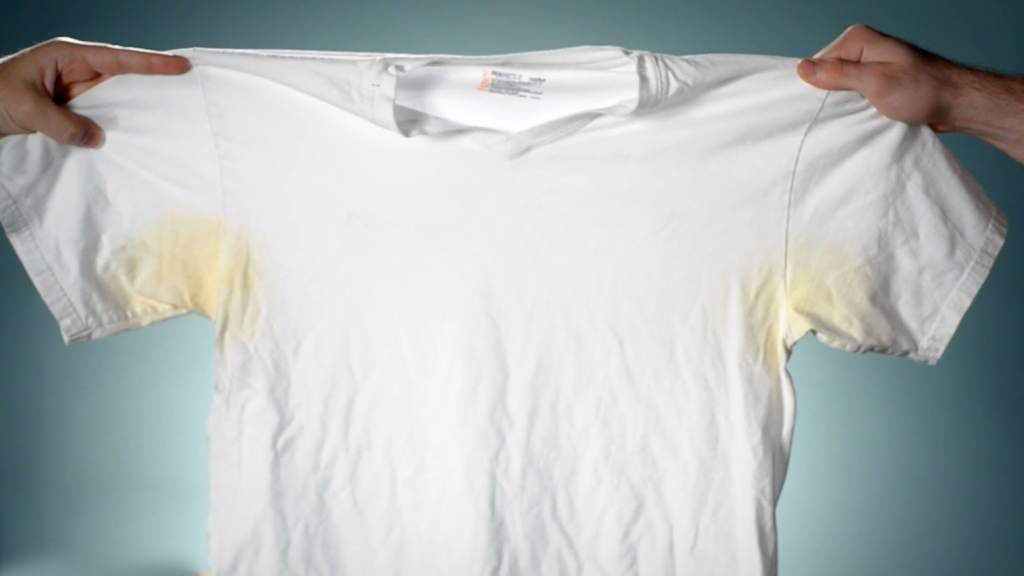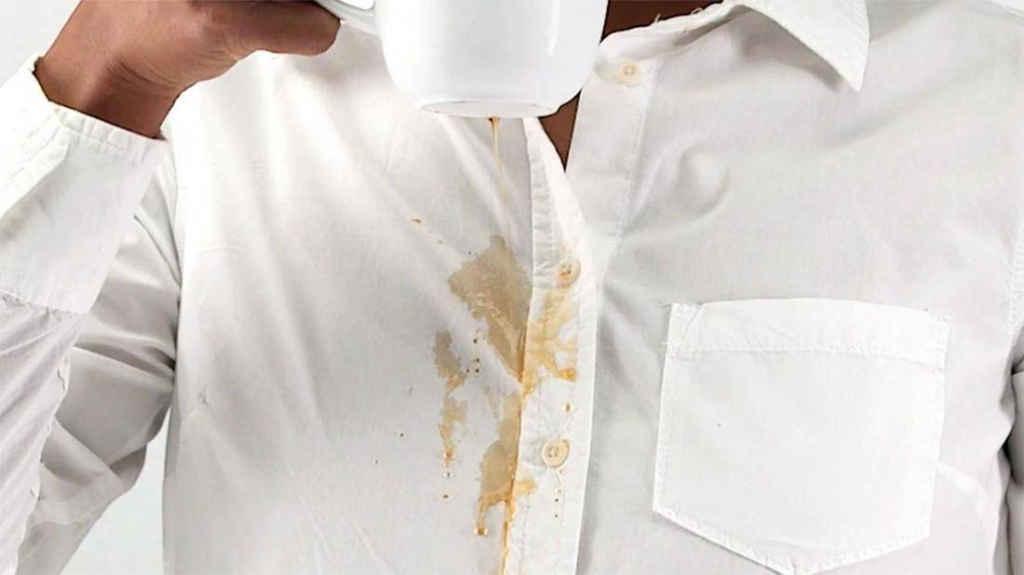White clothing naturally evokes a sense of sharpness and cleanliness. However, over time, those crisp white shirts and linens can develop unsightly yellow stains, turning what was once pristine into something decidedly less fresh. Whether it’s a favorite white shirt or tablecloth, the battle against yellows stains is a common laundry woe. But fear not: removing yellows and restoring your whites to their former glory is entirely possible with the right approach. In this article, we’ll explore various methods to get rid of yellow on white clothes, ensuring your garments look whiter again, without causing damage to the fabric.

Identifying the Culprits: What Causes Yellow Stains on White Clothes?
Before we dive into the methods of whitening clothes, understanding the causes of yellowing is crucial. Most often, yellow stains are a result of sweat mixing with deodorants, which contain aluminum. This reaction not only causes yellowing but could also harden the fabric in the underarm areas of white shirts. Hard water, which contains high levels of minerals, could also be causing yellowing—or at the very least, making your fabrics look dull. Lastly, improper storage, such as keeping clothing in areas with poor ventilation or in direct contact with wood, could also play a part in your clothes turning yellow.
Pre-Treatment Practices for Optimal Results
By treating stains before washing, you’re adding a powerful step to the cleaning process. Pre-treatment is particularly effective for whitening clothes, as it tackles the problem areas head-on. To begin, identify the yellow spots and apply a specialized pre-treatment solution. These solutions could range from homemade pastes to commercial pre-treatments.
The Power of Sunshine: Natural Bleaching
Sunshine is a natural bleaching agent and could help your white clothes look brighter. Lay your garments out in direct sunlight after applying lemon juice or distilled white vinegar to the stains. The UV rays will help in removing the yellows and act as a natural whitening agent.
Pre-Soaking Secrets
Pre-soaking your garments can effectively loosen up the yellow marks before the main wash. A pre-soak could involve anything from a simple baking soda solution to an advanced oxygen bleach mixture. The key is to give your item a good long soak—ideally for one to two hours.

Tried-and-True Methods for Whitening Clothes
Now we come to the main event: the washing cycle itself. Here we’ll look at several effective methods for making sure your whites are looking their brightest once again.
The Magic of Baking Soda and White Vinegar
Baking soda and white vinegar are tried-and-tested cleaning agents that not only whiten clothes but also help in removing old detergent residues. First, start by adding one cup of baking soda to your washing machine drum along with your clothes. Then, pour one cup of white distilled vinegar during the rinse cycle. This combination is especially effective in removing stubborn yellow sweat stains.
Harnessing Hydrogen Peroxide
Hydrogen peroxide acts as a mild bleach and can be perfect for whitening clothes without the harsh effects of chlorine bleach. When using, mix one part hydrogen peroxide with two parts water and apply directly to the stains. After letting it sit for about an hour, wash as usual.
Commercial Solutions: Choosing the Right Whitening Product
If home remedies are not your thing, there’s a wide array of commercial whitening solutions available. These are specifically formulated for whitening clothes and are effective in eliminating yellow stains. Make sure to follow the product instructions for the best outcome.
Hand-Washing vs. Machine Washing: A Comparative Look
The choice between hand-washing and using washing machines might not only impact the whiteness of your garments but also their longevity.
Best Practices for Hand-Washing White Clothes
Hand-washing allows you to control the scrubbing of yellow armpit stains and other affected areas without causing damage. It’s a good way to target stubborn stains more directly, by creating a paste made from whitening agents and gently applying it to the discolored portions of white shirts, before rinsing well and drying in the sun.
Machine Washing Tips for Maintaining White Clothing
When using washing machines, avoid damage by selecting the warmest water setting that is safe for the fabric type. Add a whitening booster, such as oxygen bleach or distilled vinegar, to your detergent and let the machine do the heavy lifting. Make sure to remove the clothing as soon as it is done to prevent any potential yellows from setting back into the fabric.
Preventing Future Discoloration: Proactive Measures
Treating yellow stains is just one part of the battle; preventing them from occurring in the first place is just as important.
Proper Storage and Handling
Storing clothing properly helps prevent yellowing caused by environmental factors. Avoid using plastic garment bags and instead opt for fabric covers that allow clothes to breathe. Also, keep white clothes separate from colored items to avoid the transfer of dyes.
Understanding Fabric Care Labels
The care labels on your clothes are there for a reason — they guide you on how to wash each garment properly. This prevents yellowing and damaging the fabric from incorrect washing temperatures or methods.
Regular Maintenance for Lasting Whiteness
Routine laundering helps keep whites looking fresh. Wash white clothes after every wear to reduce the chance of sweat and oils setting into the fabric and causing yellowing.

Conclusion
Removing yellow from white clothes can be simple when you know the right tricks. With the range of solutions we’ve covered, from mixing baking soda and white vinegar to harnessing the natural bleaching power of sunlight, you now have an arsenal of methods at your disposal to tackle those pesky yellow stains. Remember, the key to keeping your whites looking their best is not only in how you treat stains once they appear but also in how you prevent them. Regularly practicing these whitening and preventive tips will help ensure that your favorite white garments stay bright and fresh for years to come.
FAQs
- Can all methods for removing yellow stains be used on any fabric type? No, certain fabrics might be damaged by more aggressive treatments such as bleach. It’s essential to read the care labels on your clothing before applying any stain removal methods. Delicate fabrics, for example, may require milder solutions or professional cleaning.
- How can I avoid yellow stains on white shirts caused by deodorants? To avoid causing yellowing, you could switch to an aluminum-free deodorant and always allow the deodorant to dry completely before dressing. Washing your shirts promptly after wearing can also prevent the buildup of deodorants, which might cause yellowing.
- Do natural methods work as well as chemical whiteners for restoring the whiteness of clothes? Natural methods, such as using lemon juice and sunlight, can be very effective, especially for less stubborn stains or as a maintenance method for keeping clothes looking brighter. For more stubborn or older stains, you may need to use stronger treatments.
- How long should I soak my clothes to effectively remove yellow stains? Soaking time can vary depending on the severity of the stains and the type of cleaning solution used. However, a general guideline is to soak the garments for at least one to two hours for effective results.
- Could using too much bleach cause white clothes to turn yellow? Overuse of chlorine bleach can cause a chemical reaction with protein-based stains like sweat, leading to yellowing. Moreover, too much bleach can weaken fibers and cause them to break down over time. Always use bleach sparingly and according to the garment’s care instructions.
